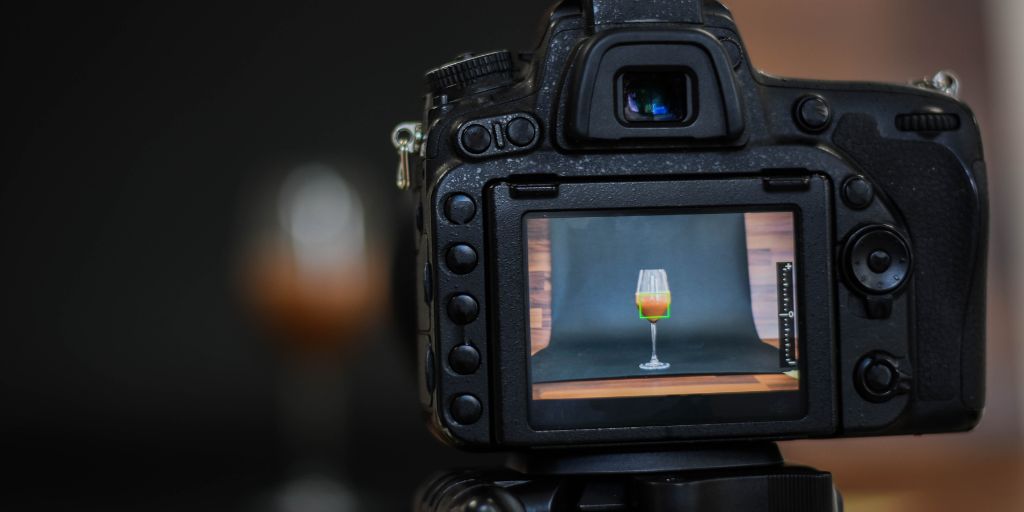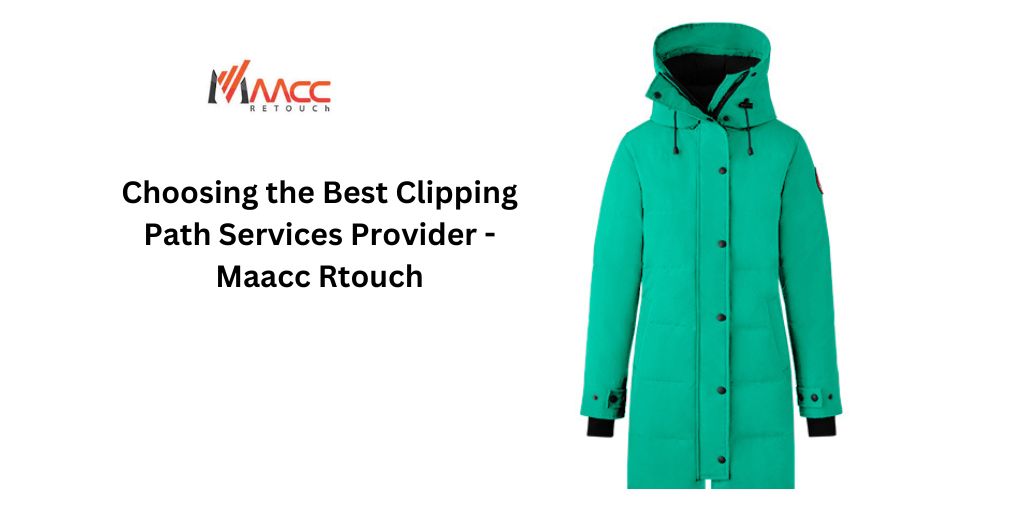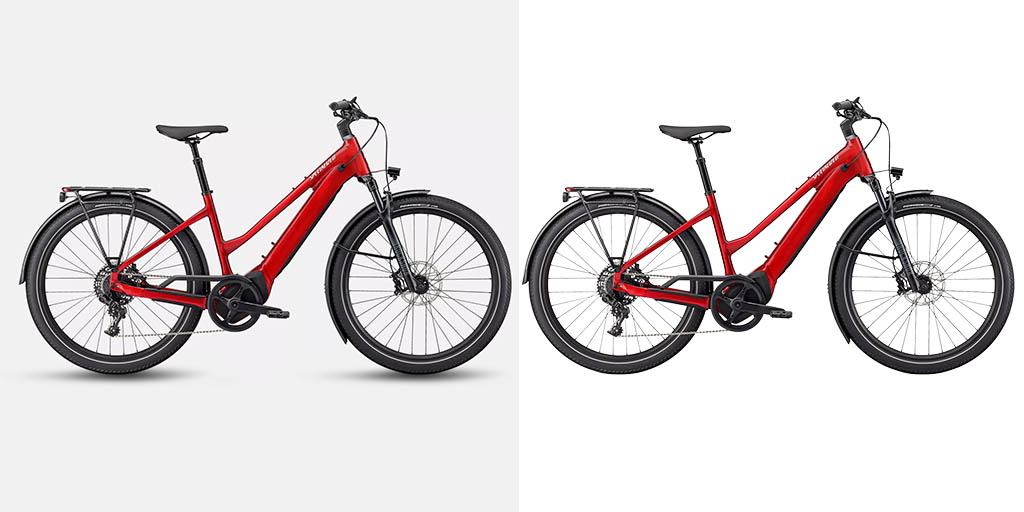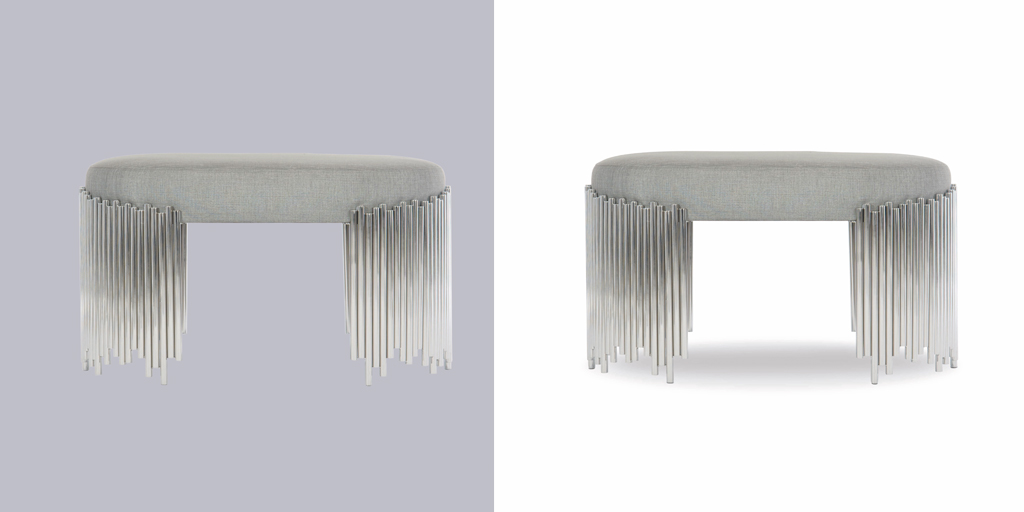What is product photography? It’s a specialized branch of commercial photography that focuses on capturing high-quality images of various products. It plays a crucial role in presenting products to consumers, whether through e-commerce platforms, print media, or advertising campaigns. The aim of product photography is to showcase the features, details, and aesthetics of a product in a visually appealing and accurate manner.
In this article, we will delve further into the world of product photography, exploring its significance, techniques, and the role it plays in boosting sales and brand recognition. We will also touch upon the expertise and services offered by Maacc Retouch, shedding light on how we contribute to the success of businesses through our exceptional product imagery.
What Is Product Photography? - The Definition
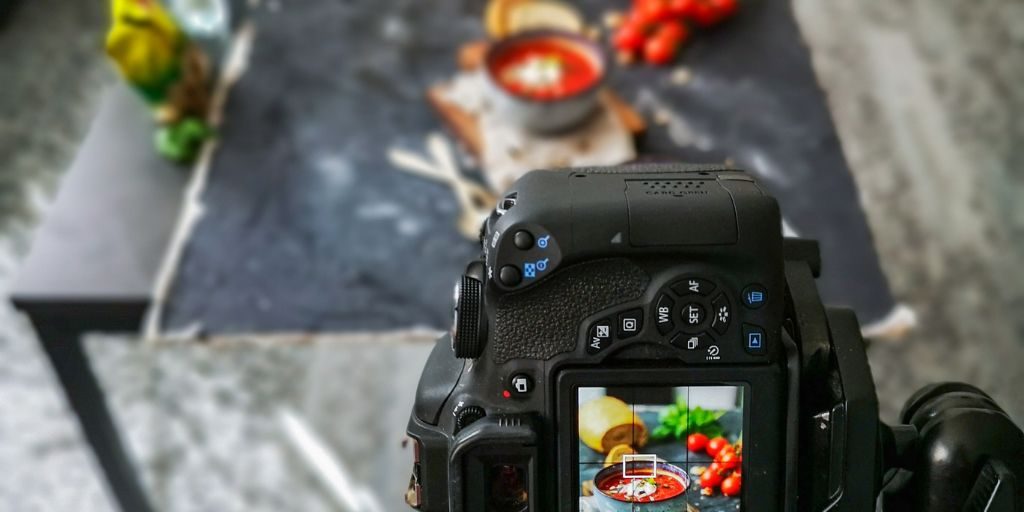
Product photography is a type of commercial photography that concentrates on capturing high-quality photographs of a variety of products. It involves creating visually alluring and accurate representations of products for e-commerce websites, catalogs, advertisements, packaging, and marketing materials, among other applications.
The primary objective of product photography is to showcase a product’s features, details, and aesthetics in an enticing manner, thereby encouraging potential consumers to make a purchase. It requires meticulous planning, meticulous attention to detail, and proficiency in lighting, composition, and post-processing techniques.
To capture the essence of a product, product photographers employ various tools, apparatus, and techniques. They pay close attention to factors such as lighting angles, background selection, accessories, and styling to create images that effectively communicate the product’s purpose or benefits and highlight its unique qualities.
As e-commerce continues to expand in the digital age, the importance of product photography has increased. Due to the inability of prospective customers to physically interact with products before purchase, high-quality product images play a crucial role in influencing purchasing decisions and establishing consumer trust in the brand.
Product photography is a potent instrument that helps businesses visually communicate the value of their products, establish a favorable brand impression, and ultimately increase sales and customer engagement.
What Is Object Photography?
Object photography is the act of taking pictures of things that don’t move. It is a broad term that covers many different types of photography, such as product photography, still life photography, and fine art photography.
product photography shows the shape, texture, color, and other details of the item itself. The goal is to make images that are interesting to look at and capture the essence of the item, making people feel something or sending a message.
Unlike product photography, which focuses on showing off goods for business purposes, object photography can include a wider range of things, such as everyday objects, artifacts, sculptures, or artistic creations. It lets shooters try out their artistic ideas and play with composition, lighting, and other things to make pictures that look good and have meaning.
Object photography can be done in a variety of places, like studios, the outdoors, or controlled areas. It usually includes carefully arranging and placing the object, taking into account things like lighting, the background, and props, to get the effect you want.
Object photography lets shooters tell stories, evoke feelings, and show the beauty and complexity of inanimate things. This can be done for artistic or business reasons. It gives us a chance to show things in new ways, which can challenge people’s ideas and help them see the beauty in things that they might not have noticed before.
Types Of Product Photography
Product photography encompasses various styles and approaches, each tailored to the specific needs of different products and their intended audience. Here are some common types of product photography:
White Background/Product on White Photography:
This is a classic approach often used for e-commerce and catalog images. The product is typically photographed against a clean, white background, isolating it and emphasizing its details. This style is popular because it provides a clear and distraction-free view of the product.
Lifestyle/Product in Context Photography:
In this style, products are photographed in real-life settings or scenarios to showcase their intended use. This helps customers visualize how the product fits into their lives and highlights its benefits.
Creative/Product Concept Photography:
This type of photography involves creating artistic and creative compositions to evoke a specific mood or theme related to the product. It often includes unique lighting, props, and background elements to tell a story or convey a message.
360-Degree Product Photography:
In this approach, a series of images are captured from different angles to create a full 360-degree view of the product. This interactive format allows customers to rotate and examine the product from all sides, providing a comprehensive understanding of its features.
Macro/Product Detail Photography:
This style involves capturing close-up shots of product details, textures, and intricate features. It’s commonly used to showcase the quality and craftsmanship of products.
Flat Lay Photography:
Products are arranged on a flat surface and photographed from a top-down perspective. This style is often used for smaller items like accessories, clothing, and cosmetics.
High-Contrast/High-Key Photography:
This approach involves using strong lighting to create bold contrasts between the product and the background. It can create a striking and dramatic effect, highlighting the product’s key features.
Low-Key Photography:
The opposite of high-key photography, low-key photography uses darker lighting to create a moody and mysterious atmosphere. This can be effective for products with a more luxurious or artistic appeal.
In-Use/Product Action Photography:
Products are photographed while being used or in motion. This can show the product’s functionality and demonstrate its benefits in action.
Ghost Mannequin Photography:
Commonly used for clothing and fashion items, this technique combines images of the product worn on a mannequin and an interior shot, creating the illusion that the clothing is floating in mid-air. This technique highlights the fit and structure of the garment.
Packaging/Product Labeling Photography:
This type of photography focuses on capturing the packaging or labels of products. It’s important for branding and conveying essential information to customers.
Food/Product Photography:
Specialized for the culinary industry, this style highlights food and beverages in an appetizing and visually appealing manner. Techniques like lighting, composition, and styling play a significant role in creating enticing images.
These are just a few examples of the diverse range of product photography styles. The choice of style depends on the product type, target audience, marketing goals, and the overall brand image a business wants to convey.
22 Product Photography Statistics:
Here are some statistics related to product photography:
1. Visual Appearance's Role in Purchasing Decision:
Studies have shown that 93% of consumers consider the visual appearance of a product to be a key factor in their purchasing decision. This emphasizes the crucial role that high-quality product images play in capturing attention and influencing buyer behavior.
2. Conversion Rate Improvement:
Product images can improve conversion rates by up to 300%. Well-crafted visuals that showcase products in an appealing and accurate manner have a significant impact on persuading potential customers to make a purchase.
3. Quality Over Description and Reviews:
67% of consumers believe that the quality of a product image is more important than the product description or customer reviews. This demonstrates the power of visual communication in conveying the value and desirability of a product.
4. Reliance on Product Images:
Nearly 75% of online shoppers rely on product images when making a purchase decision. The visual representation of a product is often the first interaction customers have with it, making it a critical aspect of their decision-making process.
5. Mobile E-Commerce Emphasis:
Mobile e-commerce is on the rise, with more than 50% of online shoppers using mobile devices to browse and make purchases. This emphasizes the importance of optimizing product images for smaller screens, ensuring a seamless and visually appealing experience for mobile users.
6. Product Image Engagement Time:
Research suggests that customers spend an average of 2 seconds looking at product images before deciding whether to stay on a webpage or leave. This highlights the need for visually compelling images that grab attention and quickly communicate the product’s key features.
7. Preference for Multiple Product Images:
One study found that 54% of consumers prefer multiple images of a product over a single image. Providing multiple angles, close-ups, and lifestyle shots helps customers gain a better understanding and appreciation of the product.
8. Reducing Returns Through Accurate Images:
High-quality product images can reduce product returns by providing a more accurate representation of the product. Clear and detailed visuals help set realistic expectations, minimizing the likelihood of customers being disappointed upon receiving the product.
9. Impact on Return Rates:
Roughly 22% of product returns occur because the product looked different in person compared to the image online. Investing in professional product photography helps bridge this expectation gap, leading to higher customer satisfaction and decreased return rates.
10. Sales Boost with Quality Images:
According to eBay, listings with high-quality product images sell up to three times more than those without. Compelling visuals capture attention, build trust, and increase the perceived value of the product, leading to higher sales.
11. Social Media Engagement and Images:
When it comes to social media marketing, posts with images tend to get 2.3 times more engagement compared to posts without visuals. Incorporating captivating product images in social media campaigns can significantly enhance brand visibility and customer interaction.
12. Quality Images and Sales on Etsy:
A study by Etsy revealed that high-quality images are directly linked to higher sales and more positive customer reviews. Investing in professional product photography not only boosts sales but also enhances brand reputation and customer satisfaction.
13. Critical Role in Decision-Making:
Consumer research indicates that 75% of consumers consider product images to be critical in their decision-making process. Compelling visuals help consumers visualize the product, understand its features, and assess its suitability for their needs.
14. Sharing on Social Media:
Customers are 40% more likely to share product images on social media compared to other forms of content. Sharing visually appealing product images can generate organic brand exposure and word-of-mouth marketing.
15. Image Quality vs. Information:
A report by Adobe found that 67% of consumers value image quality more than product-specific information or descriptions. Clear, high-resolution images attract attention and communicate product quality before customers delve into other details.
16. Impact on SMB Revenue:
46% of small and medium-sized businesses believe that improving their product images has a direct impact on sales and revenue. Focusing on high-quality visuals can yield tangible results, enhancing brand perception and ultimately driving profitability.
17. Addressing Image Quality Errors:
When selling online, 68% of product image errors are related to image quality, such as lighting, resolution, or background. Paying attention to these details ensures that the product is accurately represented, avoiding any misperceptions.
18. White Background's Influence on Purchase Likelihood:
Research shows that images with a plain white background can enhance product purchase likelihood by 30%. Using a clean, minimalist background helps the product stand out, creates a professional aesthetic, and ensures the focus remains on the product itself.
19. Interactions in Product Images and Conversion Rates:
A study revealed that product images with a person interacting or using the product can increase conversion rates by 28%. Showcasing products in realistic scenarios helps customers visualize themselves using the product, boosting their desire to make a purchase.
20. Importance of High-Resolution Zoom:
87% of online shoppers consider high-resolution zoom functionality on product images essential for making a purchase decision. Enabling customers to closely examine product details ensures confidence in their purchasing choice.
21. Value of 360-Degree Product Images:
According to Google, 50% of online shoppers value the ability to view a 360-degree product image before buying. Interactive visuals that allow customers to rotate and explore the product from different angles enhance their understanding and confidence in the product.
22. Impact of Professional Photography on Revenue:
Companies that invest in professional photography see a revenue increase of 46% on average. The impact of high-quality product images is substantial, resulting in increased sales, customer engagement, and overall business growth.
It is worth mentioning that the field of e-commerce and digital marketing evolves rapidly, and the importance of visual content, including product photography, is likely to have continued to grow.
How To Take Product Photos
Taking product photos involves several steps and considerations to ensure high-quality and visually appealing images. Here is a basic guide on how to take product photos:
Equipment and Set Up
Camera: Use a digital camera with manual settings, preferably a DSLR or mirrorless camera, for better control over settings.
Lens: Choose a lens that suits your product type and shooting environment. A macro lens is great for close-ups, while a standard prime or zoom lens is versatile.
Tripod: A stable tripod prevents camera shake and allows for consistent framing.
Lighting: Use diffused natural light or artificial lighting setups, such as softboxes or diffusers, to ensure even and flattering illumination.
Background: Use a clean and appropriate background that complements the product.
Choose a well-lit area with ample natural light or set up your lighting equipment. Position your product on a clean surface with enough space to work around it. Set up your camera on the tripod, ensuring it’s level and stable.
In fact, it’s better to set up a studio for professional product photography.
Arrange the Product:
- Clean the product and remove any dust, fingerprints, or imperfections.
- Decide on the product’s orientation and angle. Different angles can highlight various features.
- Use props or styling elements if necessary to enhance the composition.
Camera Settings:
- Set your camera to manual mode for better control over settings.
Choose a low ISO setting to minimize noise. - Select an aperture (f-stop) for the desired depth of field. A lower f-stop (e.g., f/2.8) creates a shallow depth of field, while a higher f-stop (e.g., f/8) keeps more of the product in focus.
- Adjust the shutter speed to properly expose the image. Use a tripod if using a slow shutter speed to prevent blur.
Composition And Framing:
Consider the desired composition and framing for your product. Position the product in an aesthetically pleasing way, ensuring it is the focal point of the image. Use the rule of thirds and experiment with different angles and perspectives to showcase unique elements or features.
Lighting:
Optimal lighting is crucial for capturing product details accurately. Use diffused, natural light or invest in artificial lighting to eliminate harsh shadows and create a soft, even illumination. Avoid direct, harsh lighting that can create strong contrast or wash out the product’s colors.
White Balance And Exposure:
Adjust the camera’s white balance settings to ensure accurate color representation. Consider using a gray card or reference object to calibrate the white balance. Pay attention to exposure to prevent overexposed or underexposed images.
Product Styling:
Experiment with different props or staging elements to enhance the product’s aesthetics. For certain products, showcasing the product in use or providing context can help customers visualize its usage and benefits.
Product Positioning & Focus:
Ensure the product is in sharp focus. Use autofocus or manual focus techniques to achieve optimal sharpness. Consider using a narrow aperture (higher f-stop number) to increase the depth of field and keep the entire product in focus.
Multiple Angles & Details:
Capture the product from different angles to provide a comprehensive view. Highlight unique features, textures, or intricate details by capturing close-up shots or using macro photography techniques.
Post-Processing & Editing:
After capturing the images, review them for any necessary post-processing adjustments. This could include cropping, adjusting brightness and contrast, enhancing colors, or removing minor imperfections. Use image editing software like Adobe Photoshop or Lightroom to fine-tune the images. You can take professional image editing services too. Get a free trial to check our top-notch and affordable photo retouching solutions.
The Importance of Product Photography in E-commerce Sales
Let’s see how impactful product photography can be for eCommerce sales.
Images Are Processed By People In Just Under 150 Milliseconds:
Simon Jonathan Thorpe of Paul Sabatier University is renowned for his groundbreaking research on the “Speed of Processing in the Human Visual System.” His findings highlight the astonishing capability of our brains to rapidly process visual information in less than 150 milliseconds. This swift cognitive process enables us to efficiently decipher and comprehend images, underscoring the significance of visual communication and engagement. In the realm of eCommerce, these insights take on profound importance. With consumers’ rapid visual processing, captivating images play a pivotal role in eCommerce businesses, swiftly conveying product features and triggering purchasing decisions. Thorpe’s work not only unveils the rapid workings of our visual system but also emphasizes the critical role of images in shaping the success of online ventures.
Individuals possess the ability to accurately remember around 2,500 images with a precision rate of over 90%.
In 2017, the esteemed researcher Lionel G Standing, hailing from Bishop’s University, conducted a seminal study on “Perception and memory for pictures – single-trial learning of 2500 visual stimuli Standing 70.” This research unveiled the astonishing potential of the human brain to store and retrieve visual information. Impressively, individuals exhibited a remarkable 90% accuracy in recalling around 2,500 images, underscoring the enduring impact of visual stimuli on memory. This cognitive phenomenon finds profound relevance in the realm of eCommerce, where compelling product visuals are pivotal in creating lasting impressions and aiding consumers’ memory recall, ultimately influencing purchasing decisions.
More Than 75% Of Users Say That Pictures Of Products Are Very Important To Them:
Visuals significantly influence purchasing decisions, with over 75% of shoppers considering product photos to be a crucial factor in their buying process. Compelling and high-quality product images create a positive impression and can sway consumers towards making a purchase.
Inspirational Product Photography Is Utilized By 88% Of E-Commerce Websites:
Online retailers recognize the power of inspirational product photography. By portraying products in a visually appealing and aspirational manner, ecommerce sites aim to capture customers’ attention, create desire, and ultimately drive sales.
Inaccurate Product Photos Cause 22% Of Ecommerce Returns:
When product images do not accurately represent the actual item, it can lead to customer dissatisfaction and a significant portion (22%) of product returns in the ecommerce industry. Ensuring that product photos provide an accurate depiction is crucial to reducing returns and improving customer satisfaction.
Around 49% Of Marketers Deem Visual Content Essential.
Visual content has become an essential component of marketing strategies for almost half of all marketers. This highlights the widespread recognition of the power of visual media in capturing attention, conveying brand messages, and driving customer engagement and conversions.
Consumers Order More Than 50% Of Print Photo Products Through A Computer.
According to a pie chart representation, over 50% of consumers choose to order print photo products, such as photo books or prints, using a computer rather than other devices. This preference for computer-based purchasing showcases the enduring popularity of physical photo products in the digital age.
Approximately 13% Of Photographers Utilize Smartphones For Their Client-Related Projects
The graph indicates that 13% of photographers now utilize smartphones for their client work. This suggests a shift in the industry towards mobile photography, as smartphones continue to advance in technology and offer high-quality cameras that can meet the needs of professional photographers in certain settings or applications.

